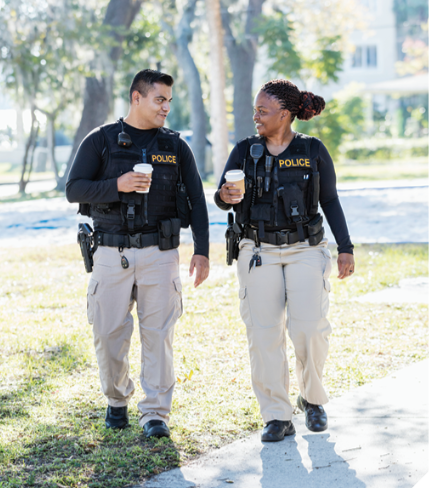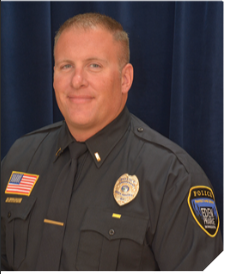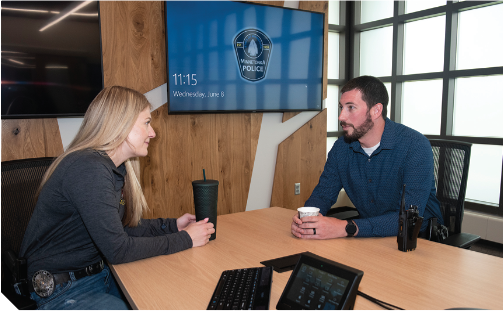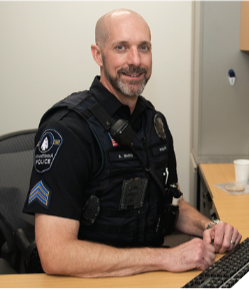Peer Support Programs: First Aid for Public Safety Mental Health
By Mary Jane Smetanka
 The job of being a first responder has never been easy. But working in law enforcement today is even harder than it once was.
The job of being a first responder has never been easy. But working in law enforcement today is even harder than it once was.
The average age of a Minnesota police officer who retires because of a disability is 41. Eighty percent of those departures are linked to post-traumatic stress disorder (PTSD). With cities struggling to attract new officers, the cost of a culture that expects traumatized employees to be tough and carry on is high.
“There’s an emotional side to law enforcement and firefighting. We’re hemorrhaging people and we can’t keep up,” says Jess Irmiter, an Eden Prairie police lieutenant. “We’ve been really good with the physical side with wellness programs, but first responders have missed dealing with the mental health side.”
Irmiter and others are trying to fix that by urging cities to set up peer support programs, where police officers and other first responders provide emotional and social support to colleagues.
Peer support counselors are trained volunteers who can respond quickly when co-workers need someone to talk to. It can be as simple as chatting over a cup of coffee or having two squad cars pull up, side-by-side for a few minutes of conversation.
Changing the culture
Peer support volunteers “have similar work and life experiences, and their peers trust them,” says Lora Setter, a former police officer who is now a public safety program coordinator with the League of Minnesota Cities Insurance Trust (LMCIT).

“If we want to reduce the stigma of talking about mental health, being able to talk to a peer is one of the most powerful things you can do,” Setter says. “It’s normalizing the conversation — how are you doing, how are you sleeping, do you want to tell me about it? It’s the willingness to listen.”
LMCIT has a Peer Support Advisory Board to help cities establish their own peer support programs. Almost 60 Minnesota law enforcement agencies have such programs, the vast majority in areas surrounding the Twin Cities. Most programs have been established in the last three years, Irmiter says. He hopes they spread across the state.
“This is a part of changing first responder culture,” he says. “We want to make these jobs a place where people want to come, and [we need to] have resources there if they want to talk.”
Candidates for first responder positions are starting to expect organizations to have good mental health resources for them, Irmiter adds.
“The perception that the institution cares for you is huge,” he says. “If people get alienated and feel alone, they don’t feel supported. That is a hurdle you just can’t get past.”
Psychological first aid
Standards for Minnesota first responder peer support programs were set in 2020 legislation. The law allows information disclosed to a peer counselor to be confidential in most cases, and sets training for peer counselors at 30 hours, with a minimum of 16 hours of in-person instruction.
Training is offered by the state Bureau of Criminal Apprehension and by private providers, usually at a cost ranging from $300 to $500.
Training focuses on issues like:
- How to effectively talk to and listen to people.
- How to recognize signs of depression, burnout, suicide risk, and alcohol and substance abuse.
- When to suggest someone seek additional help from a therapist or doctor.
“This is psychological first aid,” Setter says. “It’s a very quick response, a listening ear. If we can get to people early on, maybe we can stop things from getting worse.”
Trust is the foundation of a strong peer support program. Departments usually start with an anonymous survey asking employees which of their colleagues they would seek out if they had something tough they needed to talk about.
Those people are invited to take peer support training as volunteers. That ensures people are doing the work for the right reasons, rather than to make money or build their resume.
“We suggest that agencies don’t assign peer support team members,” Irmiter says. “That runs the risk of the assigned employee being seen as an agent of the administration, a teacher’s pet, or a mole. It creates trust issues that can sink a program, even if that may just be perception.”
Different structures

Peer support groups for law enforcement and for firefighters are structured differently. The nonprofit Minnesota Firefighter Initiative (MnFIRE) has received federal funding for insurance benefits that cover issues including mental health. Firefighters can call a state phone line to connect to a volunteer peer support person in another department.
Program Manager Frankie Jo McNallan says more than 100 trained peer support volunteers are available for the 22,000 firefighters in the state. MnFIRE pays training costs for those who want to be peer support counselors.
In law enforcement, the cost of peer support training must be covered by Minnesota cities. While the expense isn’t great, losing an officer for almost a week to the 30-hour training can be a hardship for a small city.
Patrol Sgt. Scott Marks, a Minnetonka police officer who is also a licensed therapist, says cities need a “true believer who is willing to take the reins, has the passion to do this, and is given the freedom to set it up.”
“They should talk with other departments about collaborating,” Marks adds.
Marks and Irmiter were among the law enforcement officers who set up a peer support collaborative two years ago that now includes police departments in Minnetonka, Eden Prairie, Hopkins, Edina, St. Louis Park, and Bloomington. The mix of cities means an employee can talk to someone outside their department if they wish.
Peer support is “just another tool in our belt,” Marks says. “Maybe someone isn’t into therapy, or they don’t want to talk with a chaplain. When they can talk with someone they know and trust, it can be very effective. Sometimes that one-on-one is all you need; if not, we can refer people to a therapist.”
Not just for public safety personnel
Dealing with the aftermath of a headline-grabbing event isn’t the only time first responders want to talk with a peer support counselor. Sometimes officers want to talk about other stresses that affect their work lives — trouble with a marriage or kids or finances.

And peer support isn’t just for public safety personnel. Brett Mushatt, a commander in the St. Cloud Police Department, says the 20 trained peer support staff in his department include sworn and non-sworn staff and work with 160 employees with varied jobs on and off the street.
St. Cloud’s program started in 2019. Mushatt says he doesn’t know how often it’s used — and that’s by design. “We know it gets used enough … we keep it anonymous,” he says. “When someone needs support, they go directly to the peer support counselors. I may ask someone to talk to someone who needs it, but I never follow up. If I breach that confidentiality, it can destroy the trust.”
Making the work voluntary is important to keep the motives of the people doing the work pure, Mushatt says, but training is done during the paid workweek. If there’s a critical incident and peer counselors are called in to talk with people, they’re paid overtime. When needed, employees are referred to therapists and other professionals for additional help.
A cost-effective program
Mushatt thinks that in the long run, setting up a peer support program is not only smart for employee health and retention, but it’s also cost-effective. He recommends smaller cities talk to surrounding police departments or counties to see if they can make it work by sharing training expenses and personnel.
“We don’t bat an eye at putting $1,000 into the transmission of a car,” he says. “If you believe a program like this can get one person through difficult times so they can keep doing the job they love, that’s a pretty good trade.”
He points to the hit city finances take from an early police retirement due to a disability: If a cop leaves at that average age of 41, it’s not only hard to replace that officer, but it’s expensive. Cities must pay the officer’s insurance until age 65. Those insurance costs, which are partially reimbursed by the state, can easily reach hundreds of thousands of dollars by the time a retired officer is eligible for Medicare.
“If you’re looking for a good place to spend your money, I would say peer support is a good place to start,” Mushatt says. “I believe in it.”
Marks agrees. “This can only help improve policing,” he says. “We want the best law enforcement out there. If people have options and feel healthy in their lives, it pays dividends. The beneficiaries are citizens and the community.”
Mary Jane Smetanka is a freelance writer.

